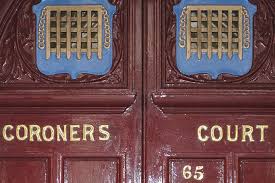Since MPs voted in favour of a December election, upwards of 3.5 million registrations have been processed digitally
Credit: PA
Since the day that MPs voted to hold a general election next month, an average of 121,820 people per day have used the government’s online voter registration service.
Between 29 October and 26 November – the deadline for registration – a total of 3.53 million applications were made using the digital service, according to GOV.UK data.
A further 318,847 registrations were submitted via a paper form – equating to about 11,000 every day.
This means that 91.7% of registrants used the digital service.
The parliamentary vote in favour of the election prompted an initial surge of registrations, with 123,000 using the online tool on 29 October and a further 165,000 the following day.
Even bigger volumes were recorded as the cut-off for registering neared; 298,000 registrations were clocked on Friday 22 November, with a further 214,000 people registering over the course of last weekend.
Monday brought 351,000 people to the service, while the Tuesday deadline saw the number of users skyrocket to 641,000.
But registration was steadily high throughout the last month. On even the slowest day, Saturday 9 November, close to 40,000 people still applied via the online tool.
Thankfully, the service has enjoyed near-complete uptime during the last month. Performance stats show uptime of 100% for every day except 18 November – when the figure was 99.7%.
3.85 million
Number of voter registrations submitted in the last month
91.7%
The number of registrations made using the online service
Tuesday 26 November
The deadline for registering for the general election – 660,000 people registered on this day
0.54 seconds
Average page load speed of the online voter registration service in the last month
Average page load speeds have been fairly steady in the range of 0.5 to 0.6 seconds. The last week saw speeds noticeably trend towards the faster end of this range – with the quickest page-load time of all, 0.47 seconds, actually recorded on the final day of registrations.
Across the last month, the average page-load speed has stood at 0.54 seconds.
User satisfaction has also remained steady through the process, according to GOV.UK data
A percentage score is calculated on a weekly basis and, for the week beginning 28 October, satisfaction rates stood at 93.7%. In the three weeks since then, the score has been, respectively, 92.3%, 92.4% and 92.3% again.
Youth club
Dividing applicants by age group – for which data is recorded cumulatively across both digital and paper formats – shows a preponderance of younger people registering to vote.
On Tuesday, 252,000 under-25s and a further 207,000 citizens aged 25 to 34 registered. This equates to almost 70% of the overall number of people that applied that day.
The day before, when a total of 366,000 people registered, 72.1% of them were aged 34 or under. Sunday 24 November brought the youngest crowd of all, with 73.2% of registrants drawn from the first two age brackets.
The proportion was a little lower earlier in the month, but even in the first two days, it stood at 65% and, on every single day, the percentage of registrants aged 34 or younger was at least 60%.
The vast majority of applicants have been UK residents, but each day since 29 October has brought at least 1,650 registrations from British citizens who live abroad.
More than 20,000 registered on the first two days after the Commons vote, while applications from overseas peaked on Tuesday at a total of 17,900.
A total of 3,681 applications have been received from armed forces personnel and 1,573 registrations from crown servants and British Council employees have been processed since 29 October.
Announcing their own analysis of registration data – which was made shortly before the cut-off – the Electoral Reform Society said that, the number of registrants represents a “huge increase” on the number of people who applied to vote in the weeks leading up to the 2017 election.
But the organisation added that, based on the previous poll, about a third of registrations in the last month are likely to have been been made by citizens who are already registered.
Dr Jess Garland, director of policy and research at the Electoral Reform Society, said: “This surge in registrations is highly encouraging, given the huge numbers missing from the electoral roll. We’re seeing a major uplift in new registrations compared to the last election, with large numbers of young people signing up too – a traditionally under-registered demographic. It’s vital we close the demographic divides in terms of who is registered. This is a strong start.”
She added: “However, since you cannot check whether you’re registered already, we estimate over a million of the registrations we’ve seen are likely to be duplicates. We urgently need to update our archaic registration system to bring in the ‘missing millions’. Britain needs a registration revolution, to ensure the right to vote isn’t a lottery but is something secured for all.”
The revolution that Garland calls for could come to pass if Labour comes to power. The party’s manifesto has promised the implementation of automatic voter registration, with citizens registered to vote on the basis of existing government data – with no need to apply.



